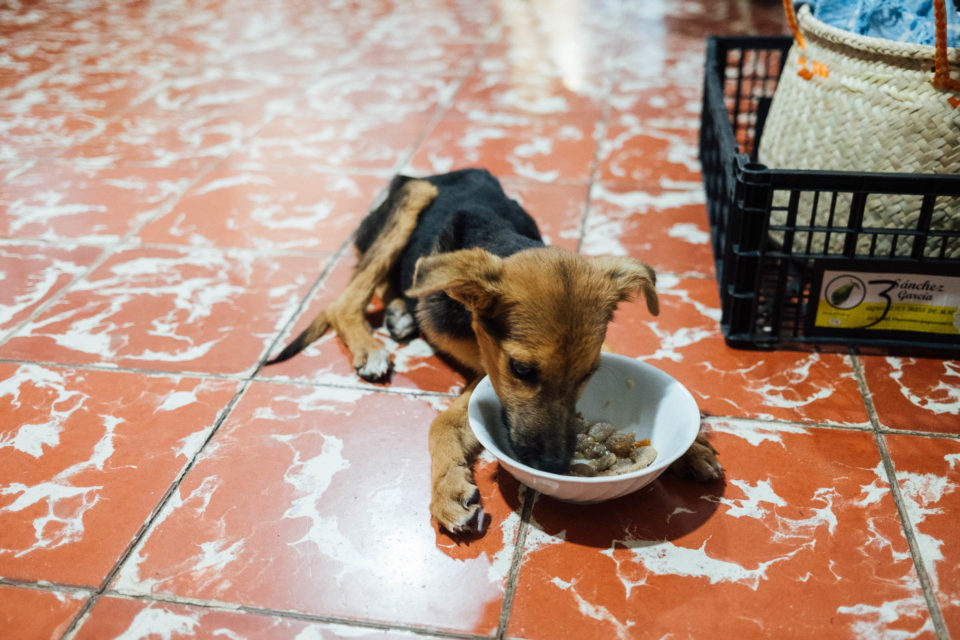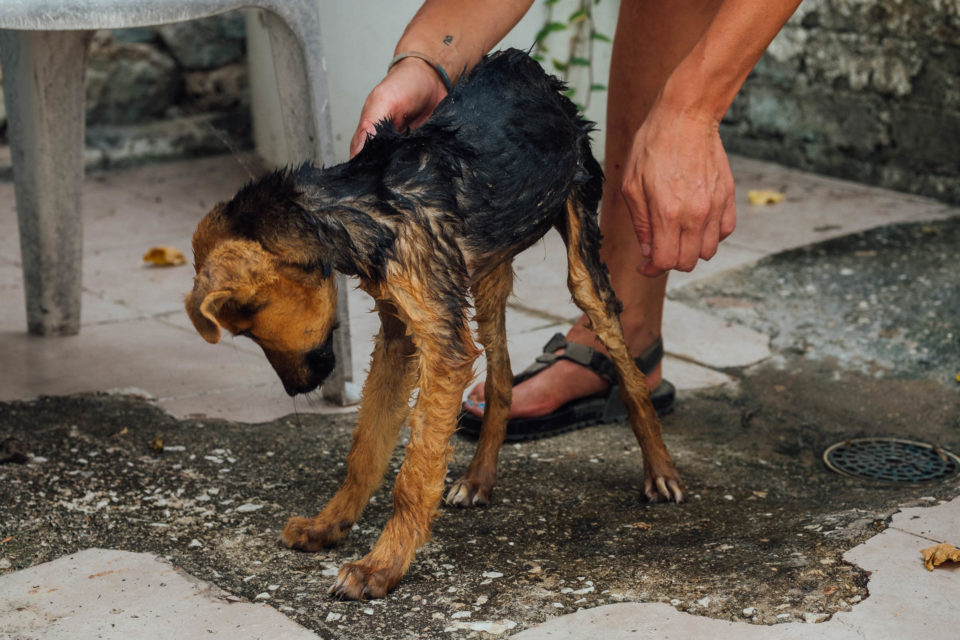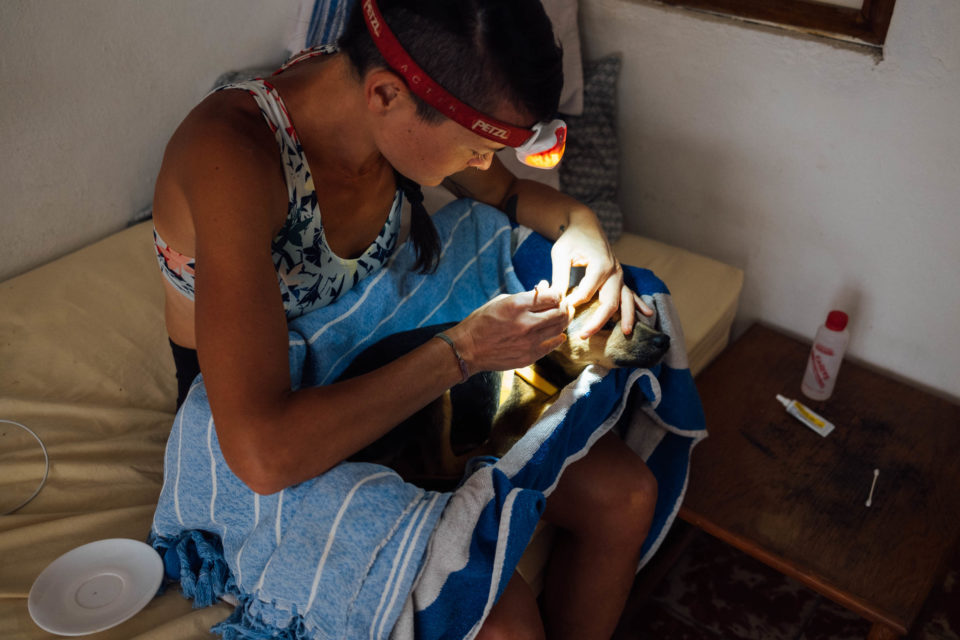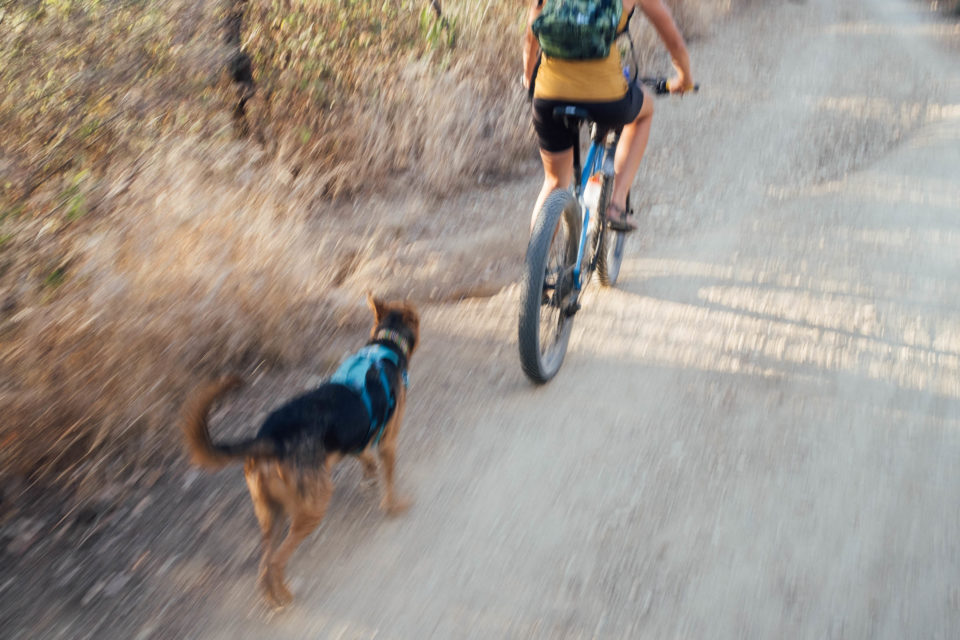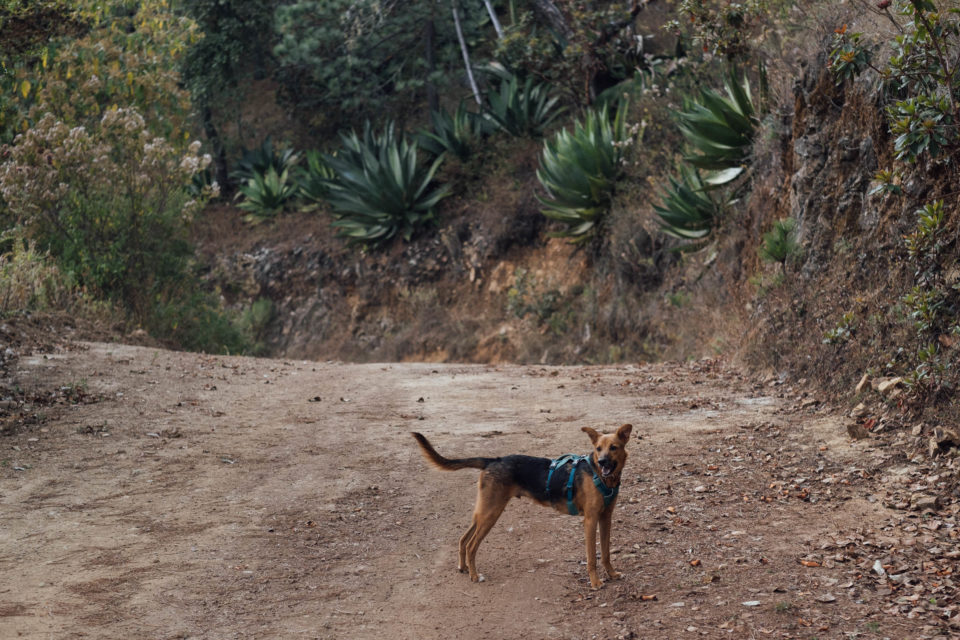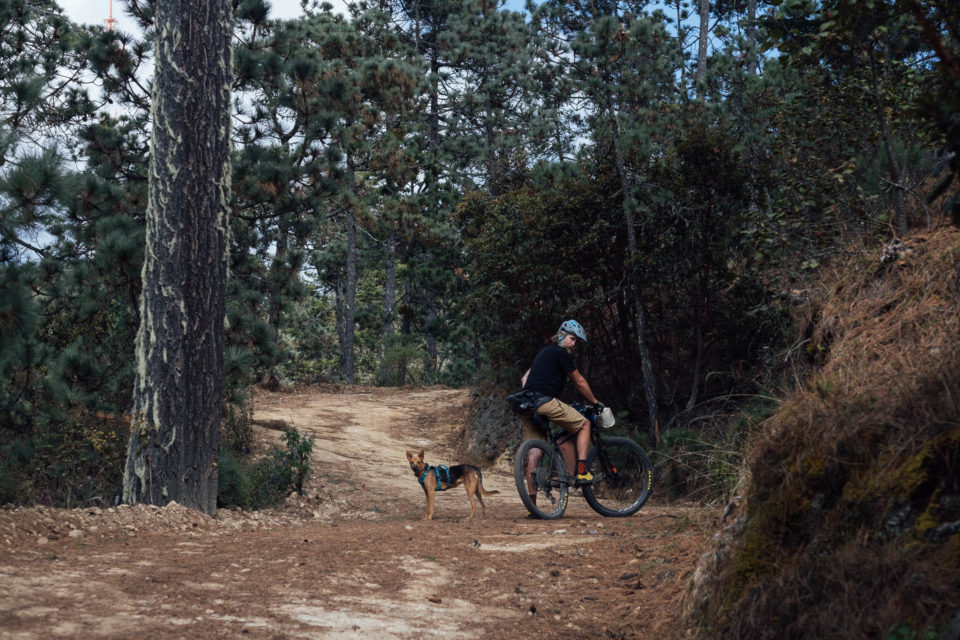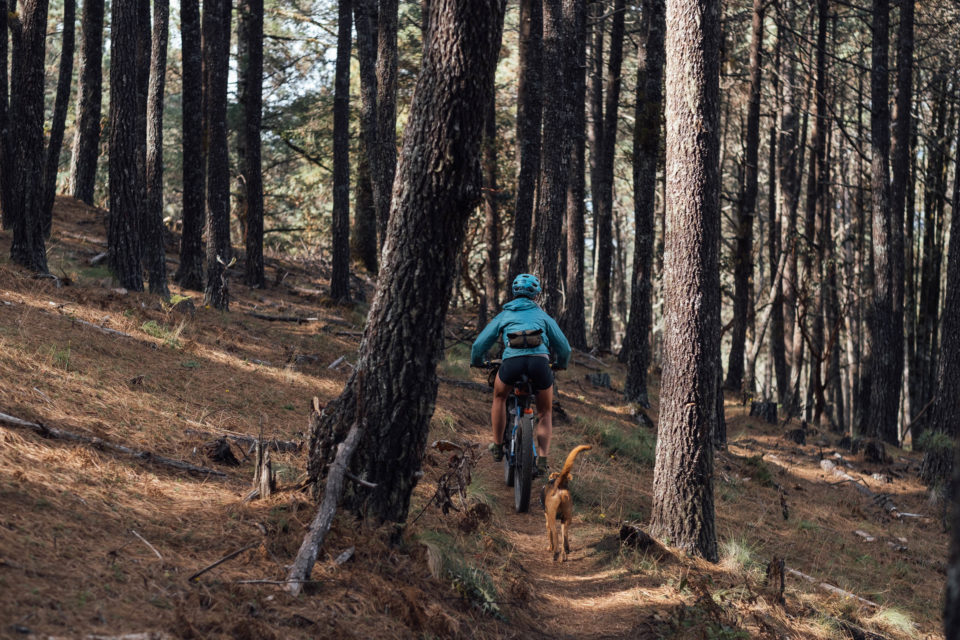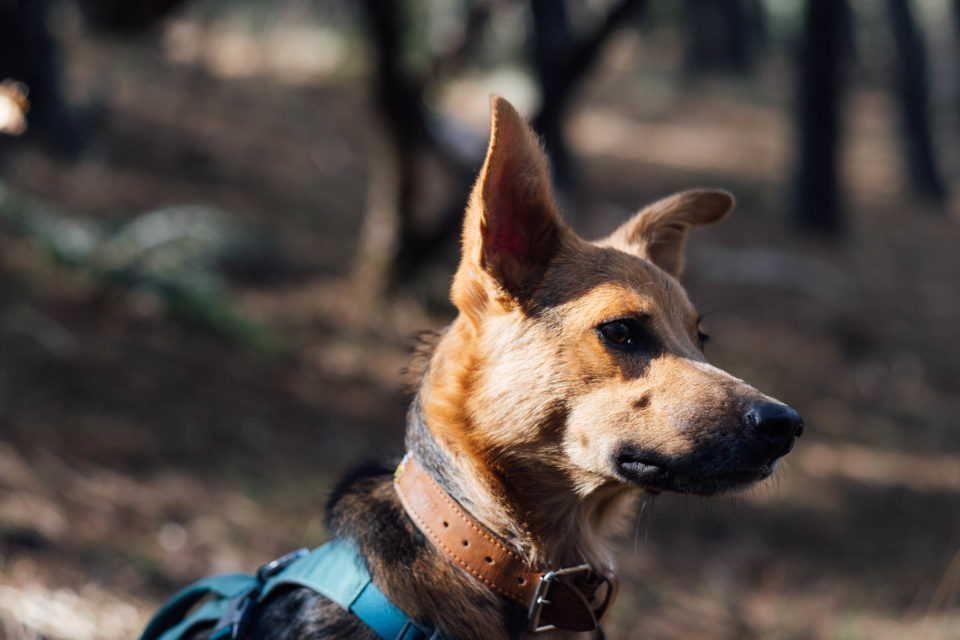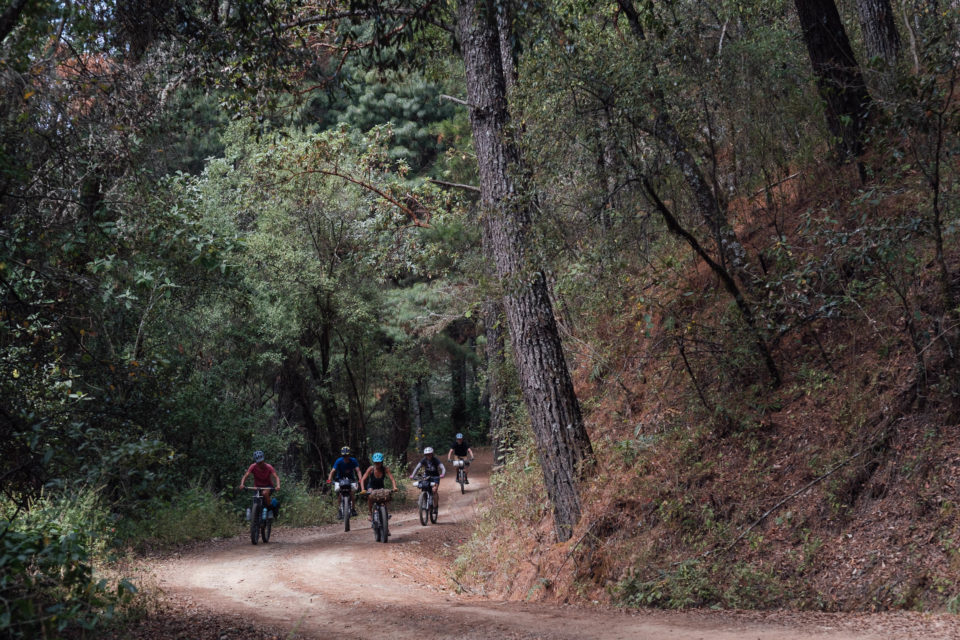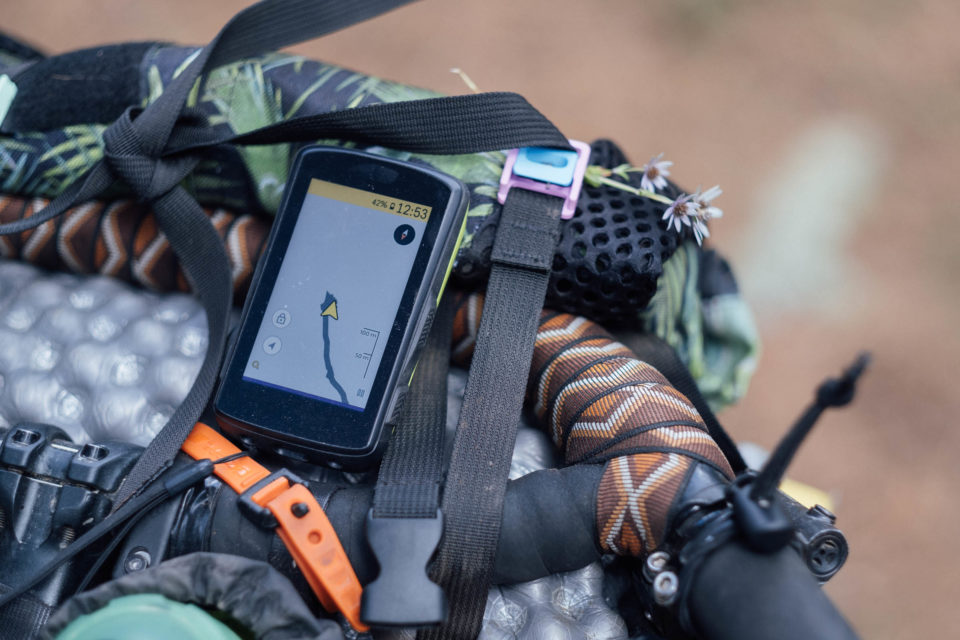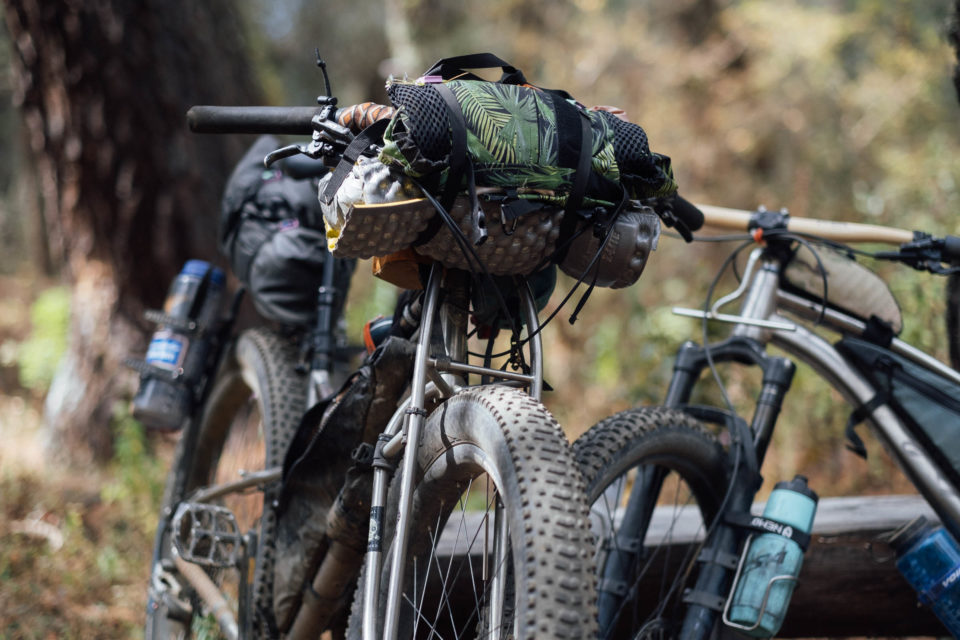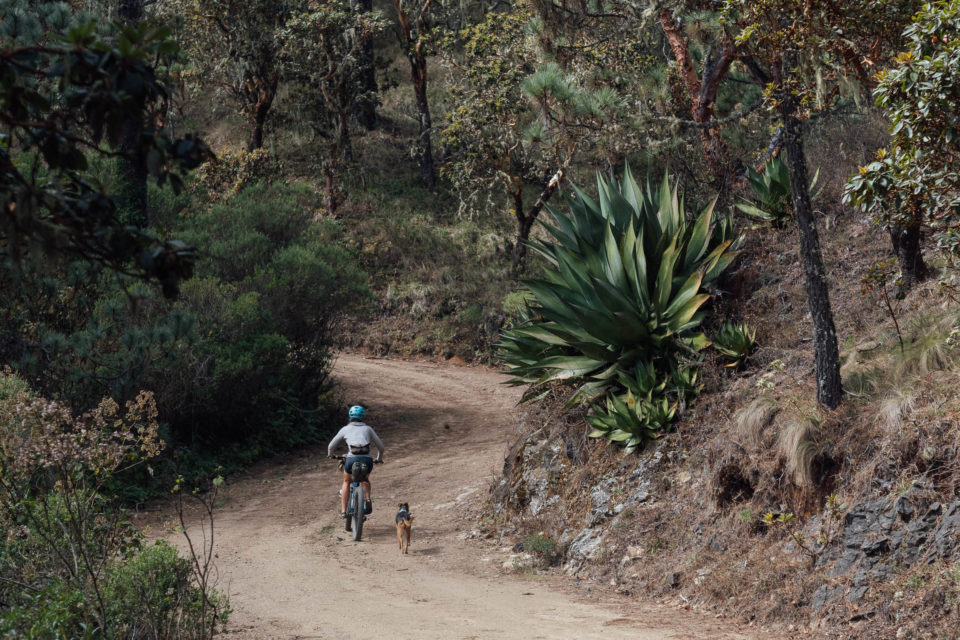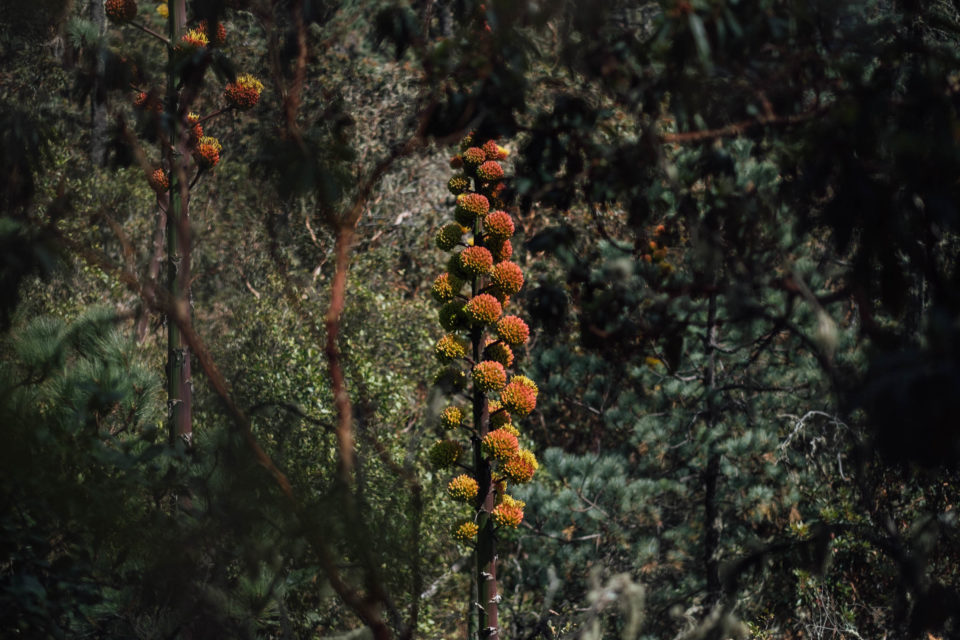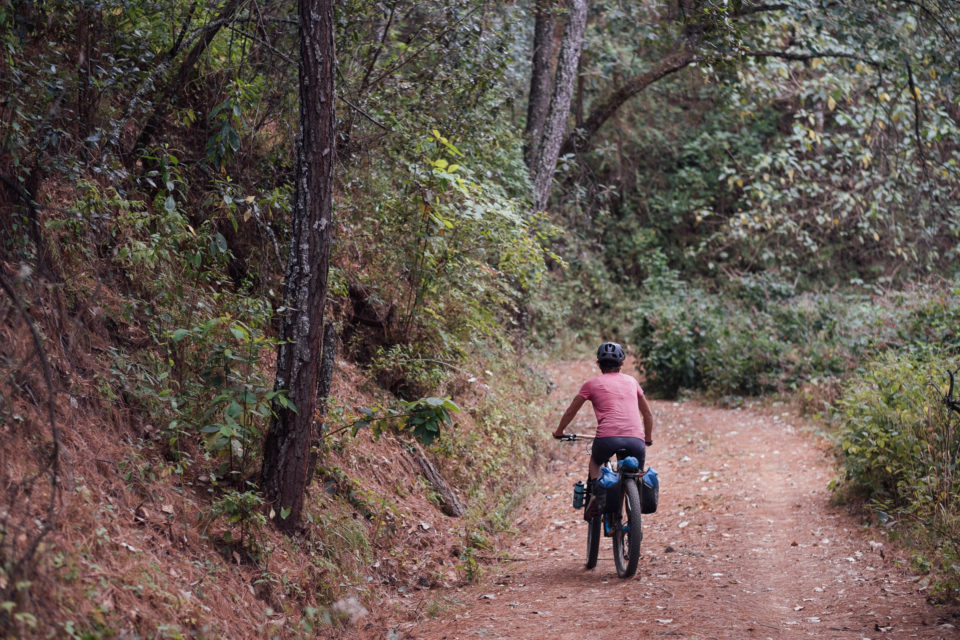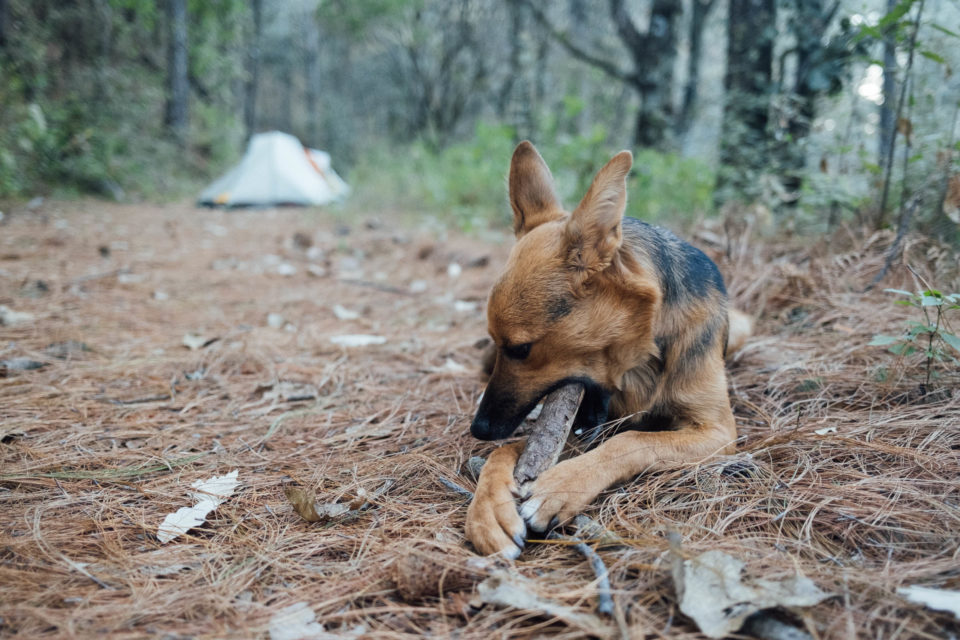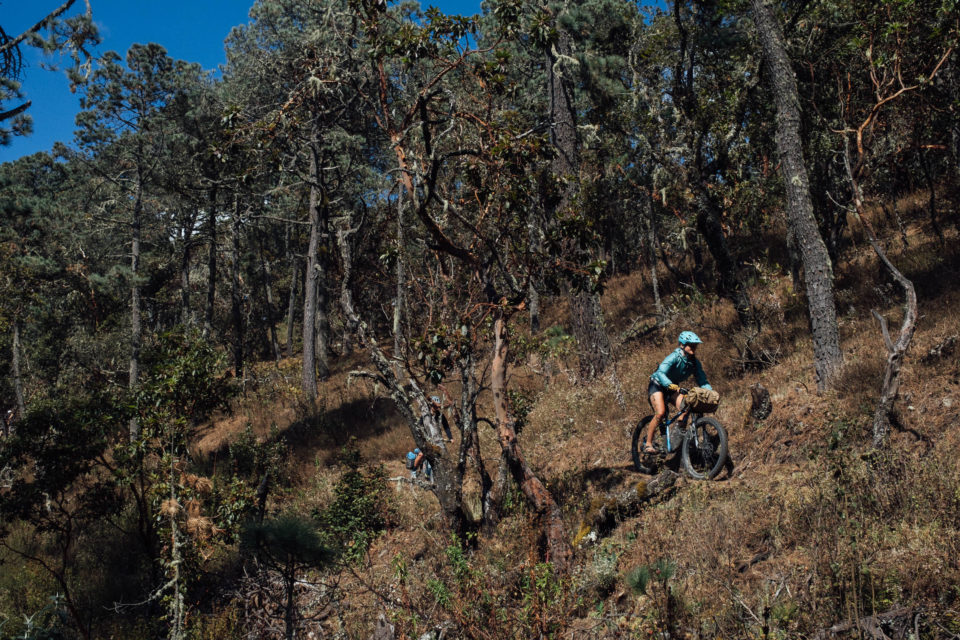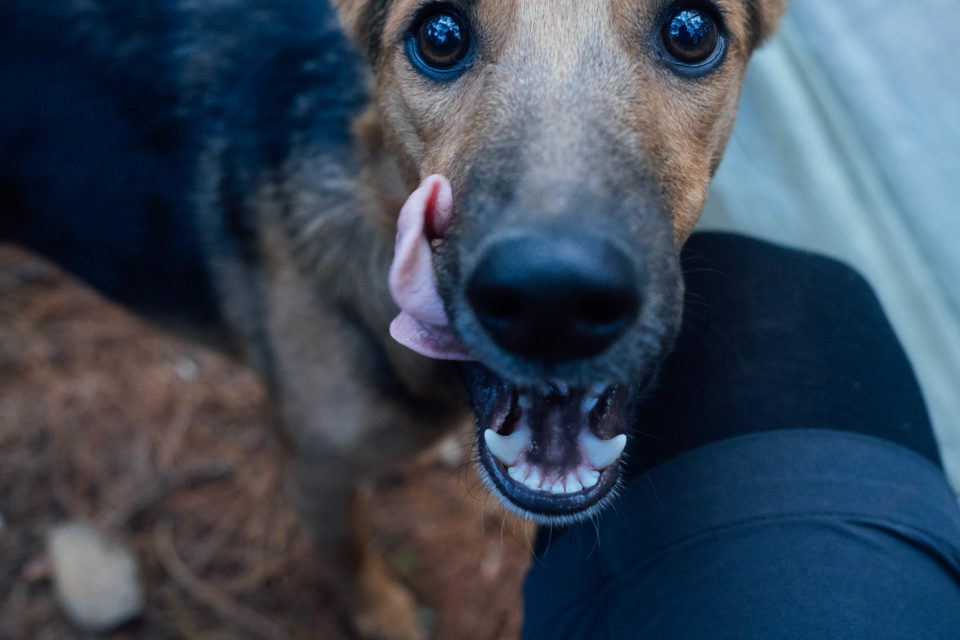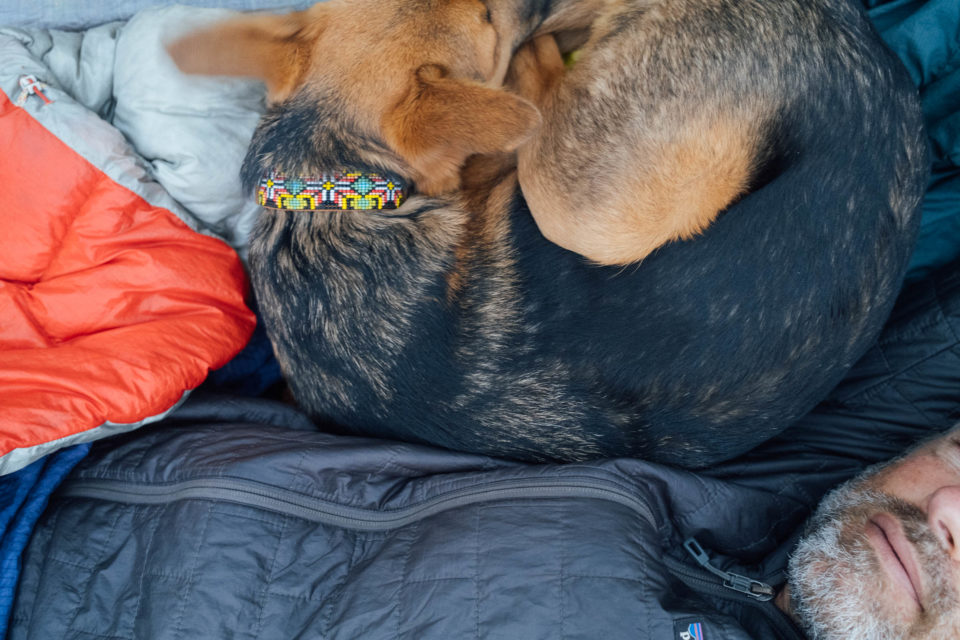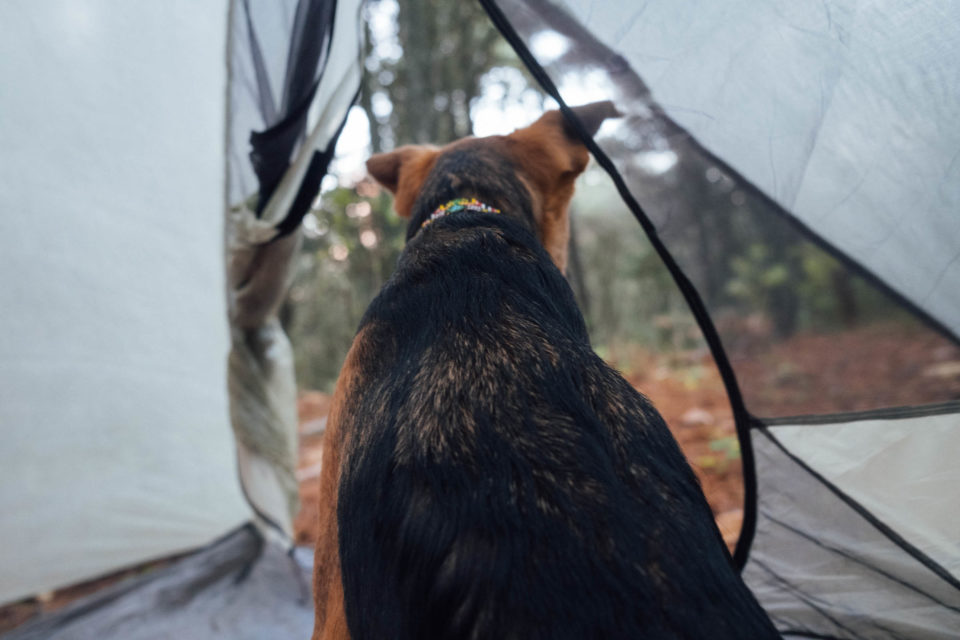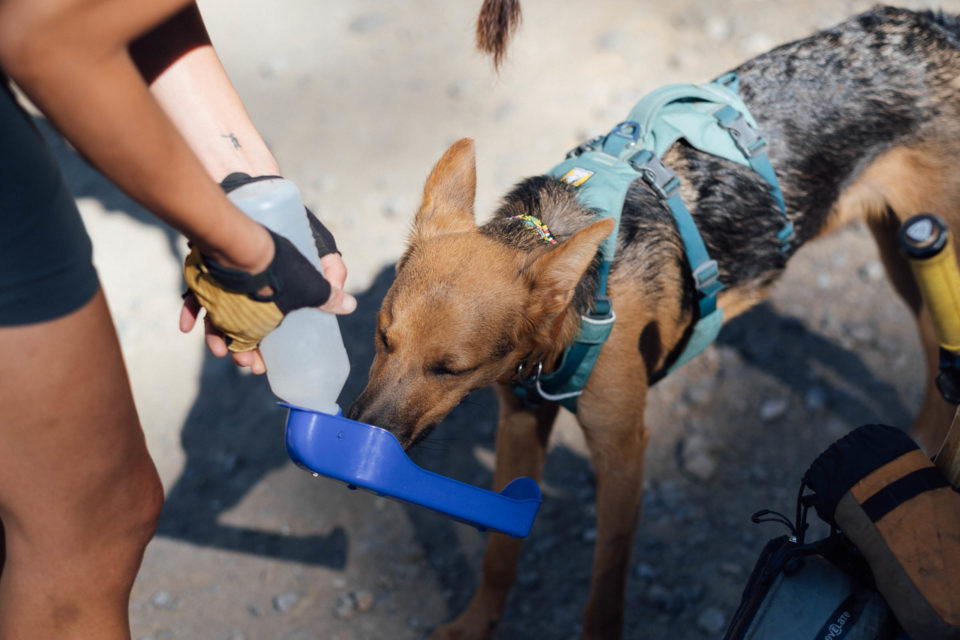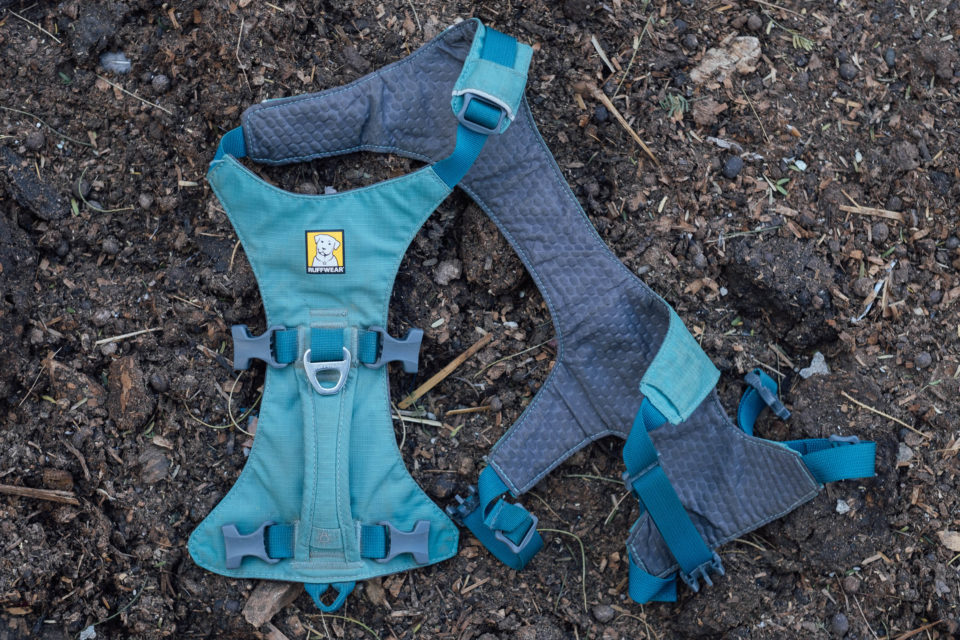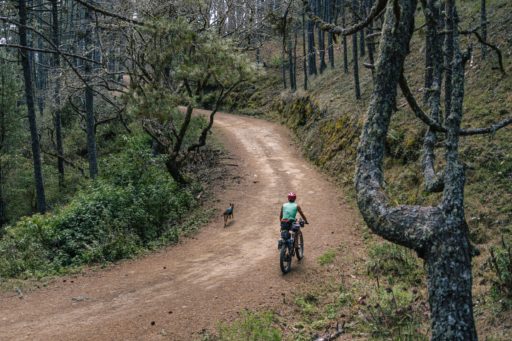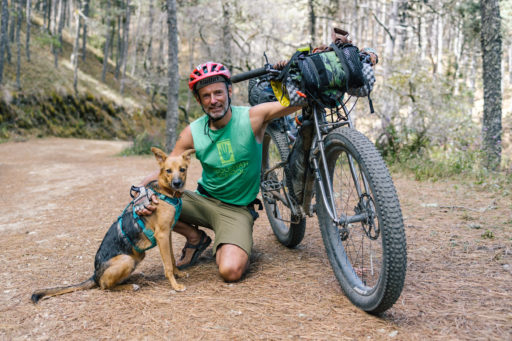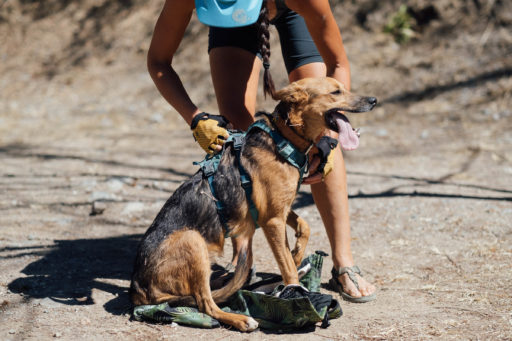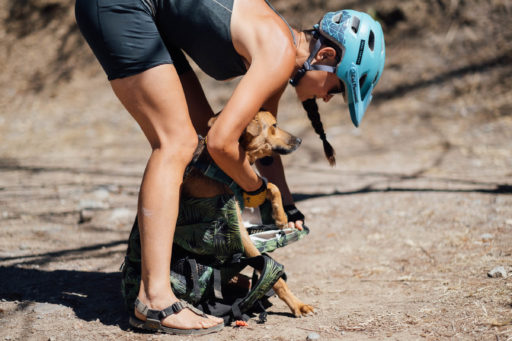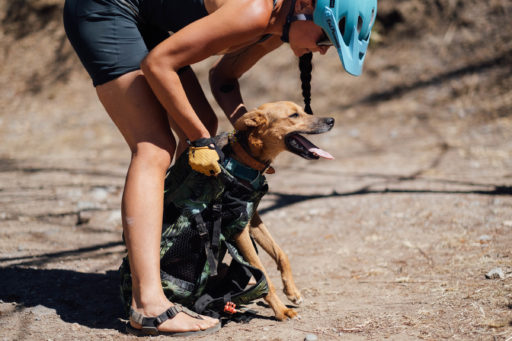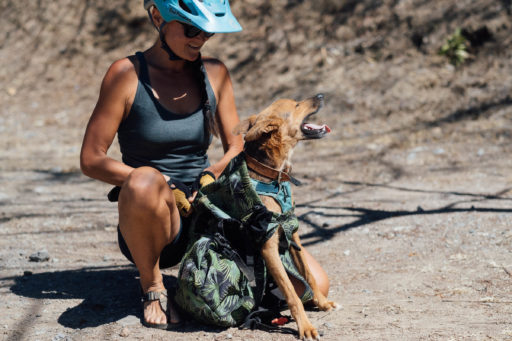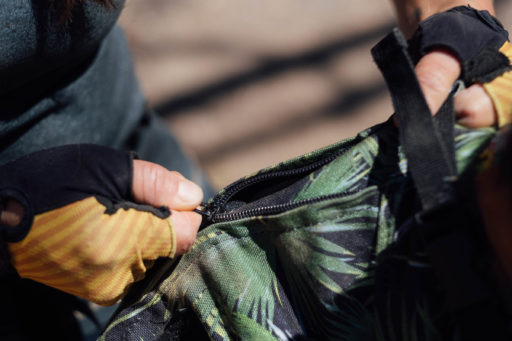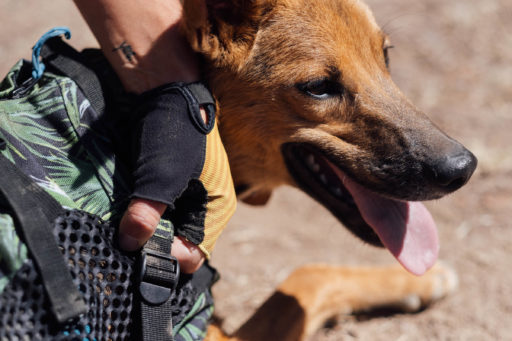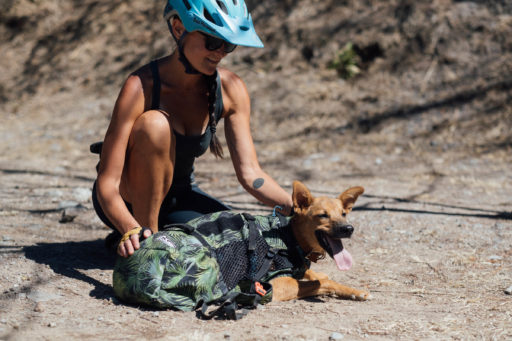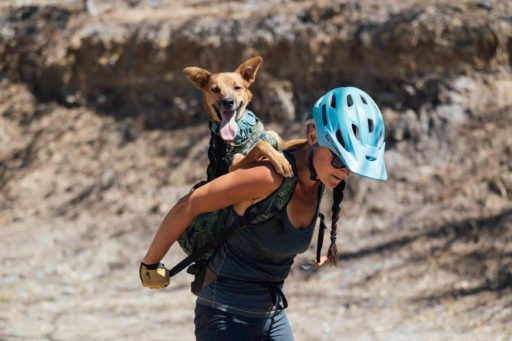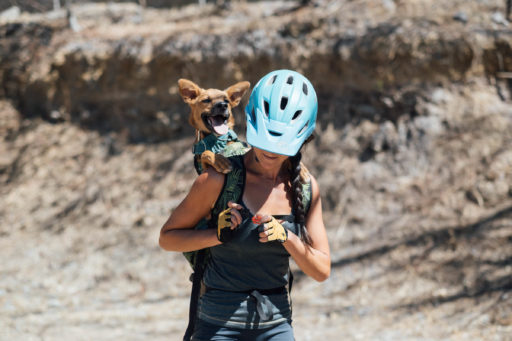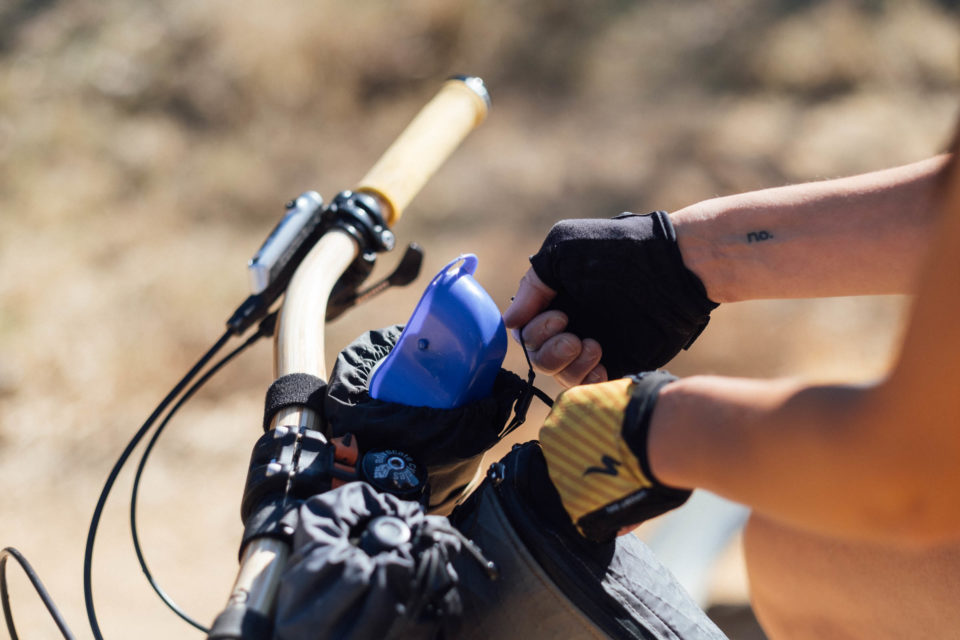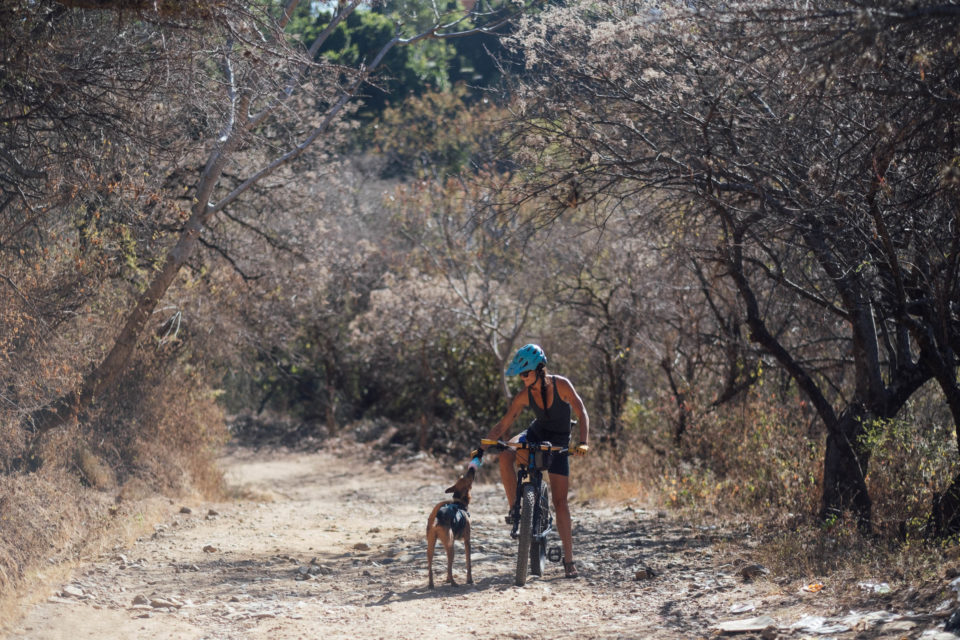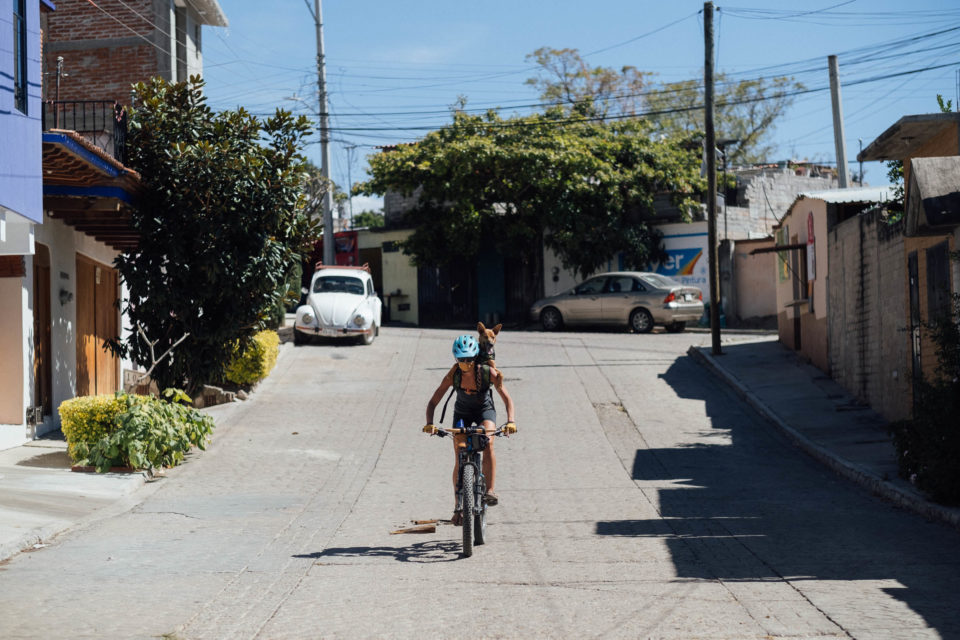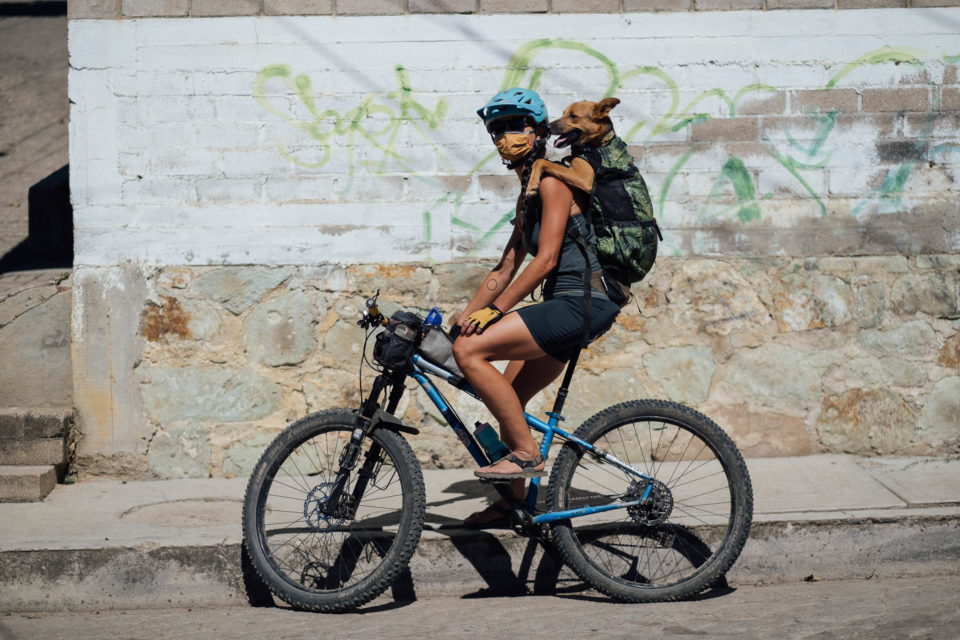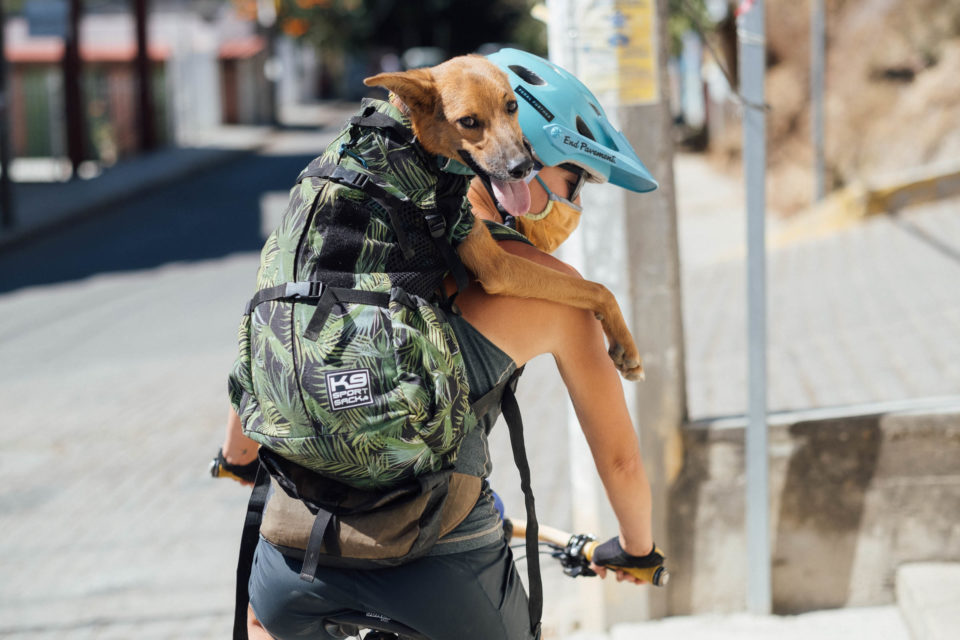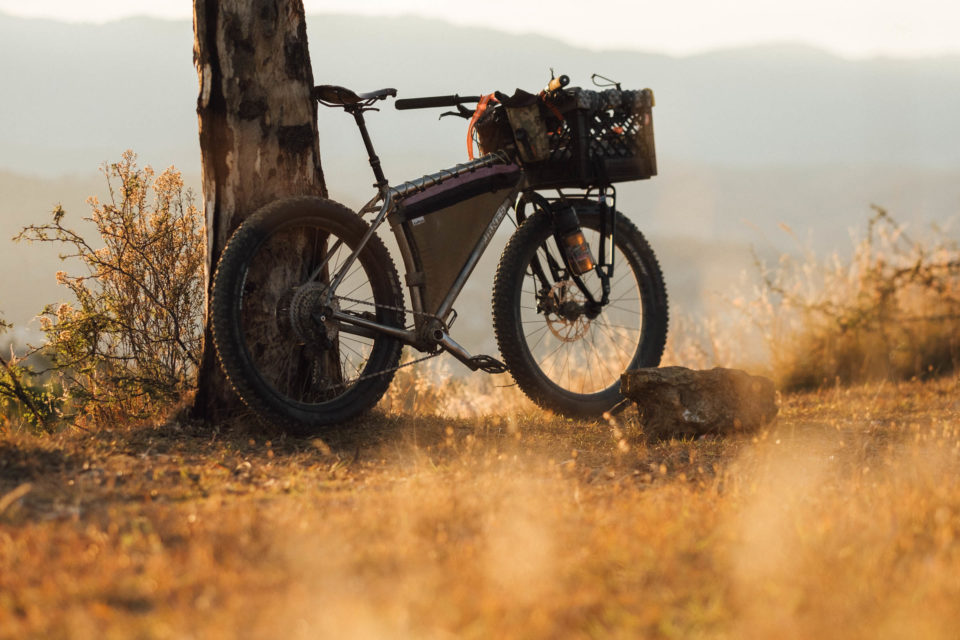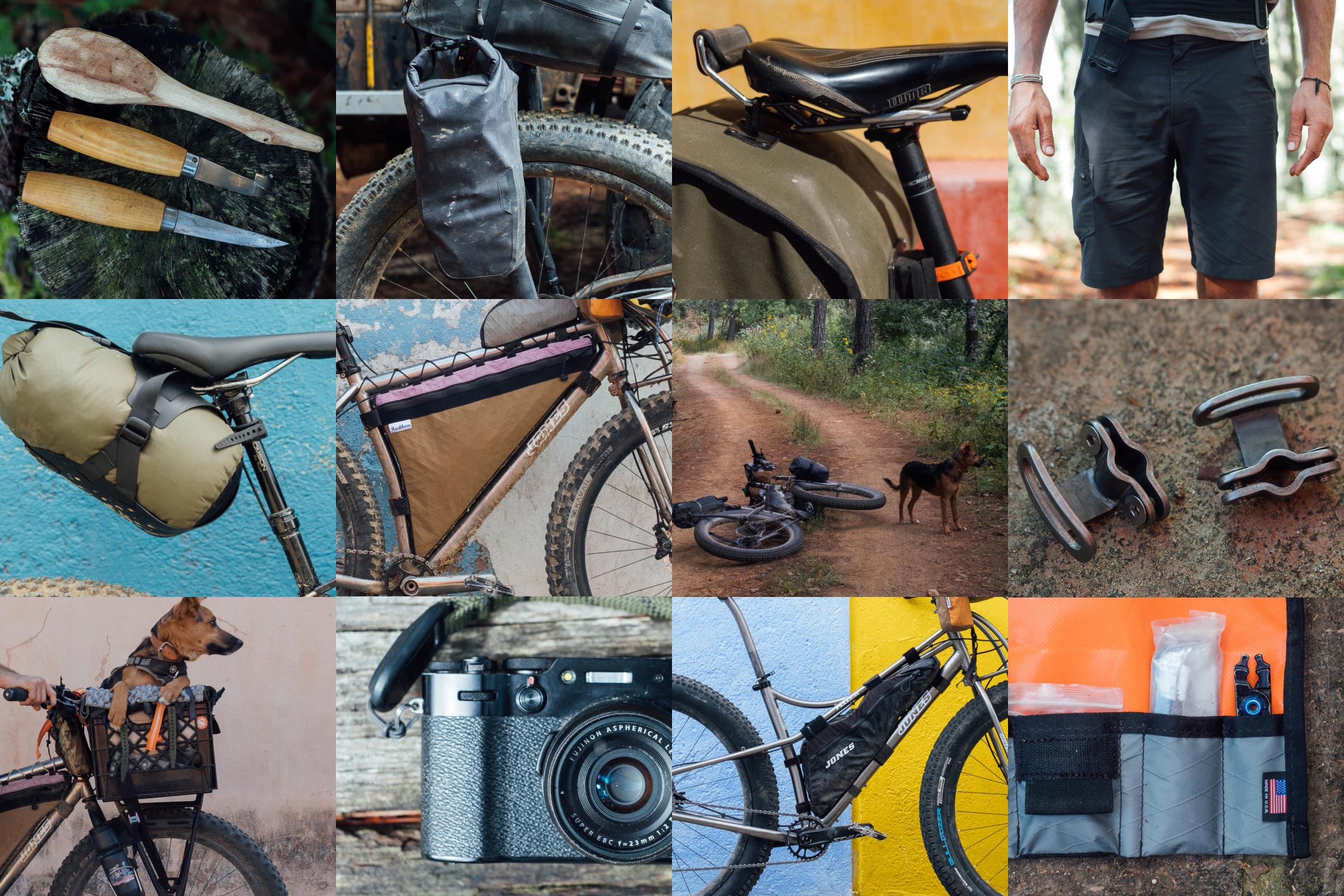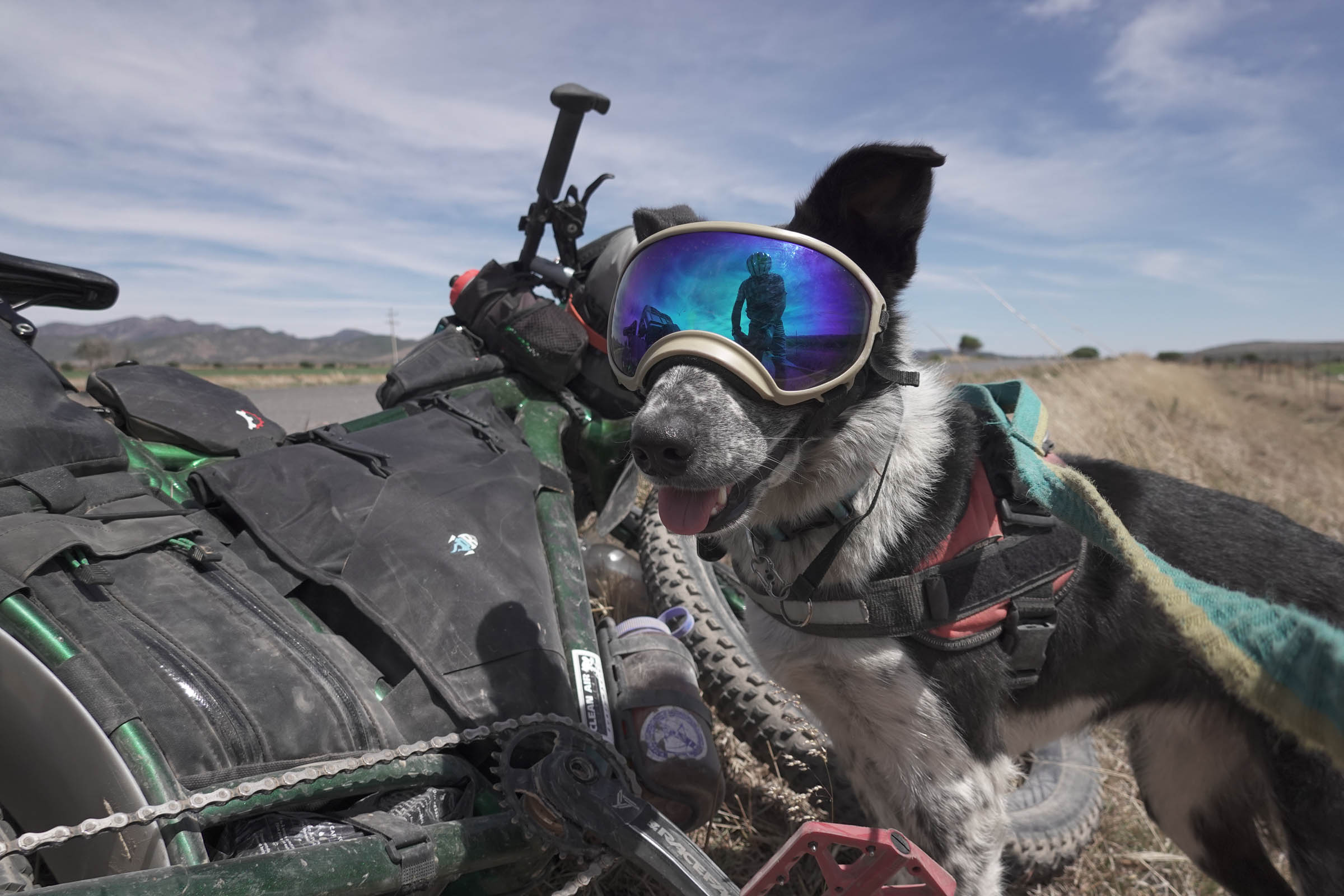Singletrack Dogpacking with Huesos: Packlist + K9 Sportsack Review
Share This
While fostering an abandoned pup rescued on a trail ride, Cass heads out with human and canine friends into Oaxaca’s Sierra Norte. Read on to discover Huesos’ tragic origin story, along with dogpacking tips, a packlist, and a mini-review of the K9 Sacks backpack used on the trip…
With additional photos by Logan Watts
If you’ve been following my recent posts, it’s possible you’ll have noticed a certain pup cameo in a number of stories, despite how much I’ve tried to resist posting too many shameless ‘puppy photos’.
His name is Huesos – that’s bones, in Spanish – on account of his once cadaverous build. Like many dogs here in Oaxaca, Huesos wasn’t exactly planned. Nor was his arrival in my life. After finding him on a mountain bike ride last July – hungry, abandoned, and alone – I helped feed him back to health with chicken livers and the best kibble money can buy, rehomed him in a local dog sanctuary, took him out for walks, and more recently have been fostering him full time.
Back then, he was less than three months old, a time when puppies should be brazenly curious, playful, and portly. Instead, Huesos was anxious, weak, and resembled, well, a collection of barking bones. He had the painful-to-see xylophone ribcage typical of the perma-hungry street dogs in Mexico and came complete with a dozen ticks in his ears, a family of wiggling maggots in a puncture wound, and a fever – along with a distrust for anything that moved and abject fear of being held.

Emma and I encountered him in the middle of one of my favourite trails, in a woodland above the city and far from any home. Darting in and out of the surrounding brush oaks, he barked at us ceaselessly, shrilly, and hysterically. It was a high-pitched and disturbing sound; in all honesty, we may even have shaken our heads sadly and continued riding if he hadn’t kept circling back towards us, as if sensing he needed help but too agitated to ask for it. So, we stopped, and it took more than an hour of gentle coaxing before he’d accept any water – poured into a leaf and left for him on the trail – and longer still before we could get close enough to finally catch him, bundle him up in a small handlebar bag, and transport him into town to the first taco stand we could find. His bones seemed as brittle as dry twigs and I worried we’d break them.
It was heartbreaking to lay eyes on his depleted little body and I wondered what this troubled soul had been through. It wasn’t until days of determined attention and ladlefuls of homecooked bone broth that his thin little tail dared to lift away from his bony bottom and attempt a tentative wag. And it took weeks before he willingly ventured into the garden and showed the first signs of being a carefree pup. Watching him get the ‘zoomies’ for the very first time was especially memorable!
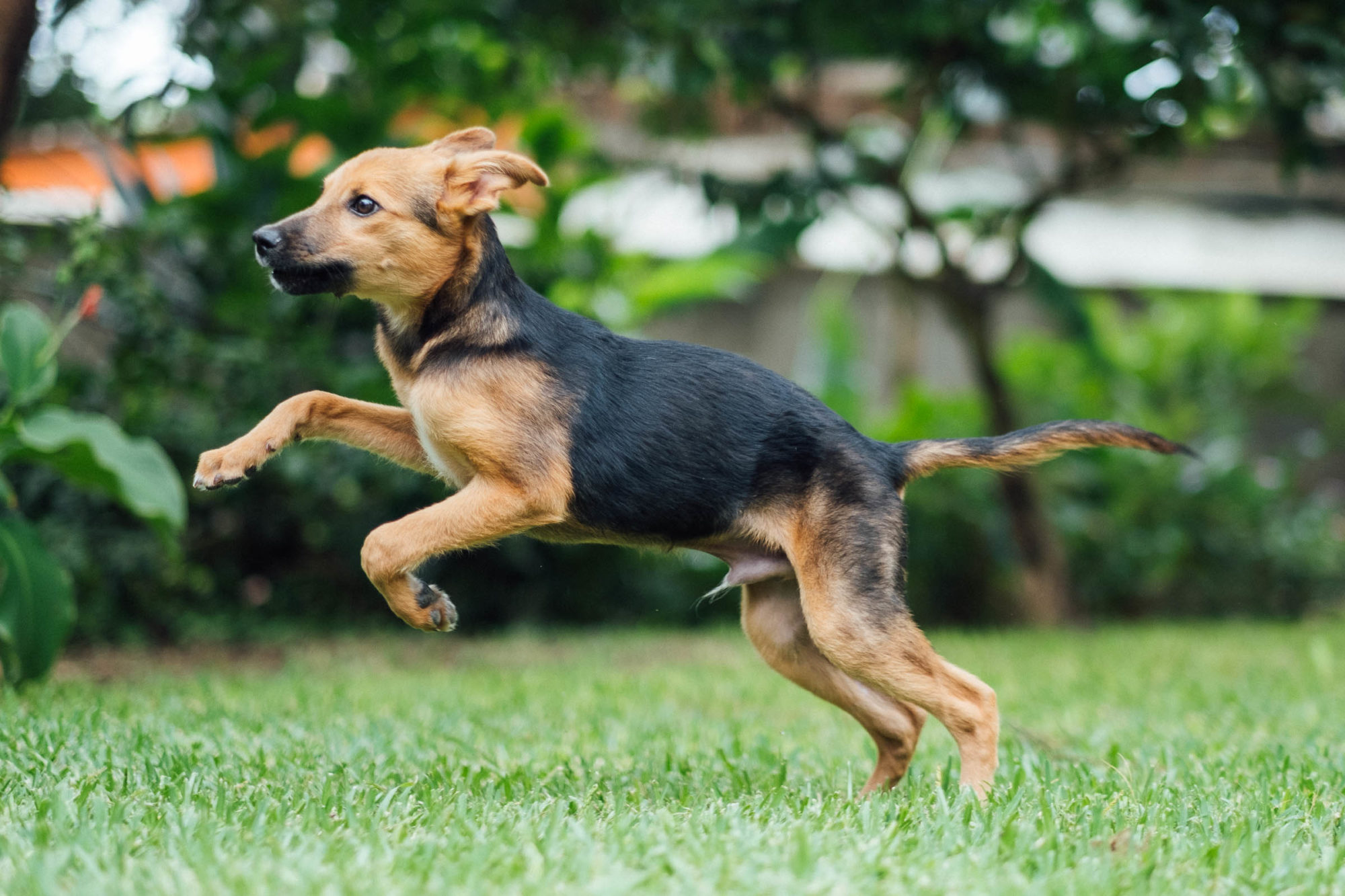
Fast forward six months from when we first found him and I still get teary when I remember how close he was to death’s door, compared to the happy dog he’s now become. A far cry from when we first named him, Huesos has grown into a strong and social companion, noticeably more confident by the day. His mixed lineage is becoming all the more evident, too. I’m sure I’ve spotted relatives of his because he’s what Mexicans call a callejero, even if we technically found him in the foothills well above the city, rather than on its actual streets. Either way, Emma and I prefer to think of him as a Pastor Zapotec – a Zapotec Shepherd. After all, he was born in the beautiful tierra Zapoteca and his distinctive colouring is likely the influence of one of the German or Belgian Shepherds milling around town.
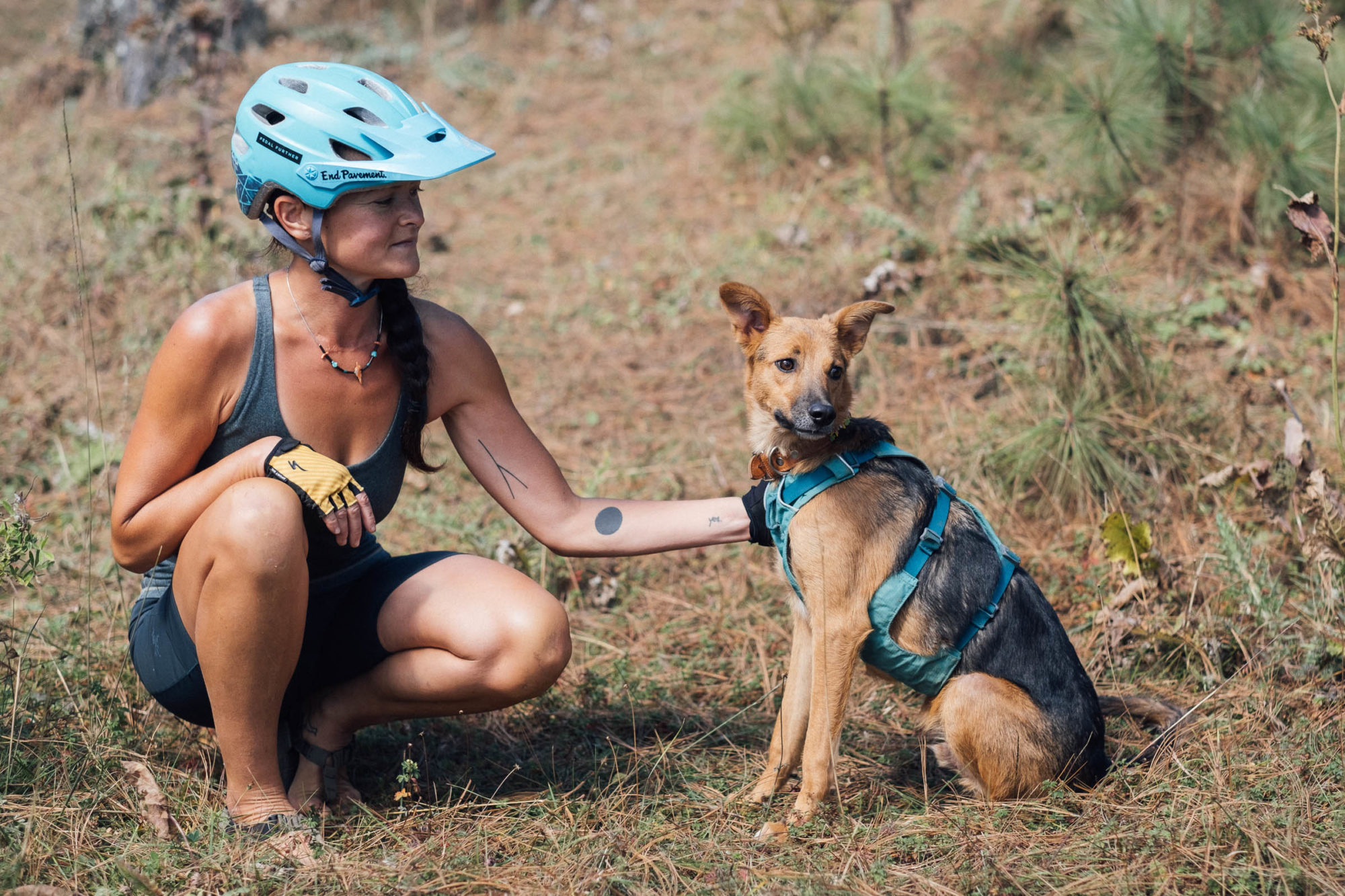
Fostering has, inevitably, resulted in a sense of attachment from all parties involved. It’s also led to the question: how best to combine being a temporary dog owner with a love of cycling, bikepacking, and a car-free lifestyle?
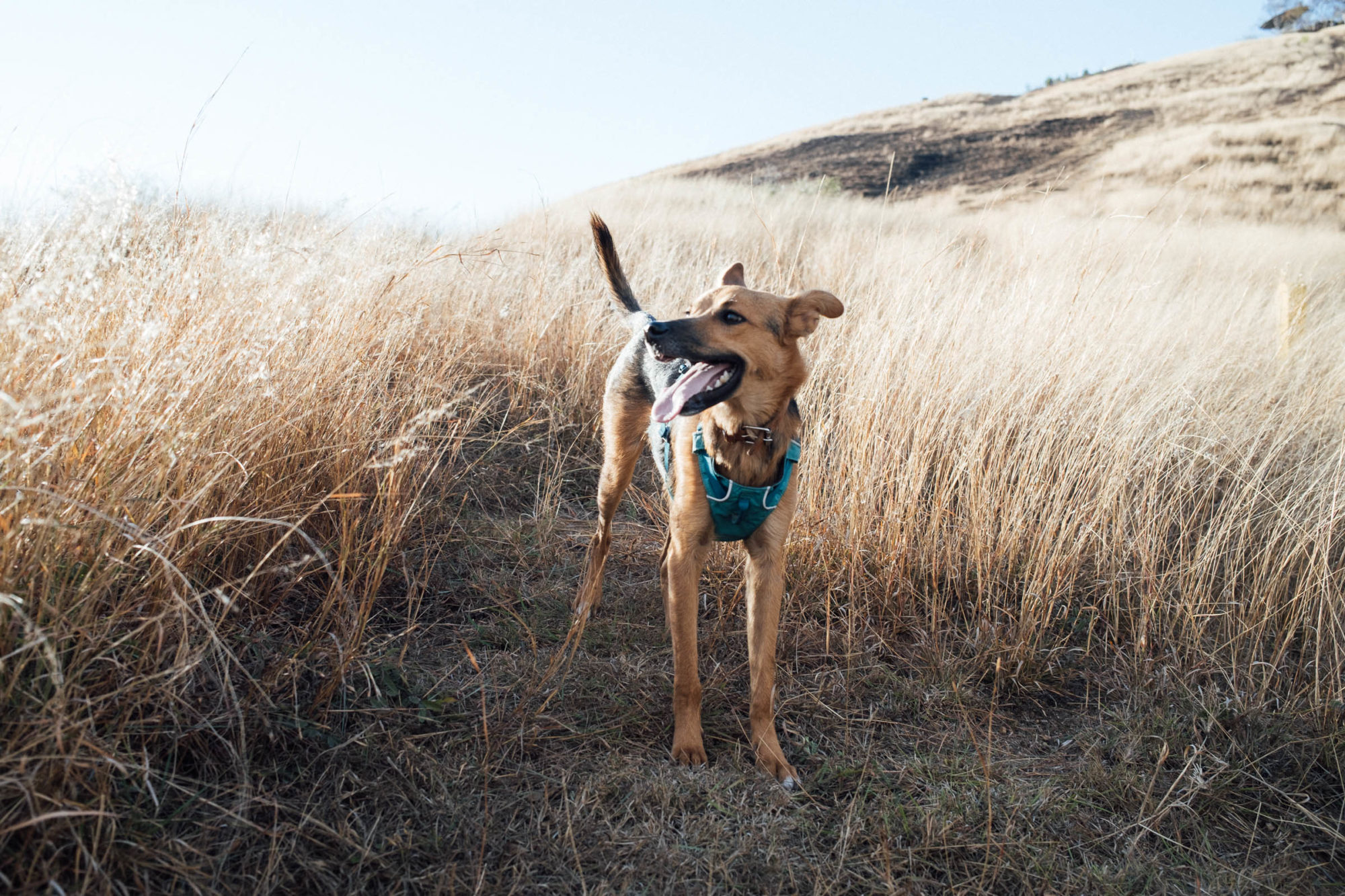
A canine-specific backpack has certainly been one piece of the puzzle, proving to be a gamechanger for accessing my local trail network by bicycle. It’s even opened up the possibility for local overnighters, of which a recent jaunt into the Sierra Juárez is the perfect example. While longer, mellower dogpacking tours would be better suited to a trailer, basket, or crate-style setup, the trails in these rugged, neighbouring mountains are too technical for anything but a lightly laden bikepacking setup.

Together with Emma, Logan, Gin, Amanda, and Chris, we set off on a singletrack-infused trip into my favourite swathe of high country, following a route that traced the exact spot we found him. It’s a zone I’ve written about in different forms for the site – whether as a route or a report – because whenever friends are in town, it’s my go-to destination for sharing some of the best mixed terrain riding Oaxaca has to offer.
Our original plan was to be out for the night – a protracted climb and hike-a-bike to 2,400 metres would be rewarded with a trail descent that’s distinctly wild and picante in flavour. But, as ever, once we were up amongst the bromeliads, lichens, and ferns – with more than 1,000 metres of climbing banked in our legs – it proved hard to leave this beautifully biodiverse zone. Instead, we decided to keep riding, up and up, all the way to the Ixtepeji’s Centro Ecoturistico, and extend our stay in the mountains. Run by the local community, it’s set deep in the forest and makes a great base to leave gear and ride the adjoining trail network unladen. Plus, there’s simple lodging, thick blankets, and hearty fare on offer.
This is tough climbing country and we all invariably struggled more than Huesos, especially once we topped out at 3,000 metres in elevation. Alert and content, he trotted patiently amongst with his human pack, looking back to make sure everyone was present and there were no stragglers. Singletrack descents? Ninguna problema. One of Huesos’ great joys is chasing us down trails. He was either right behind my rear tyre, feet scampering, mouth smiling and tongue dangling, or learning to give way to faster riders. It was on the longer forest road stints, especially when we were dropping quickly, that he struggled. The mechanical marvels of bicycles meant it was relatively effortless for us to quickly pull ahead, while he had to work flat out just to keep in sight, which risked wearing out his little paws. This is where the dog backpack really came into its own. When I sensed he was waning or working too hard, we’d stop and load him in, giving him a breather.
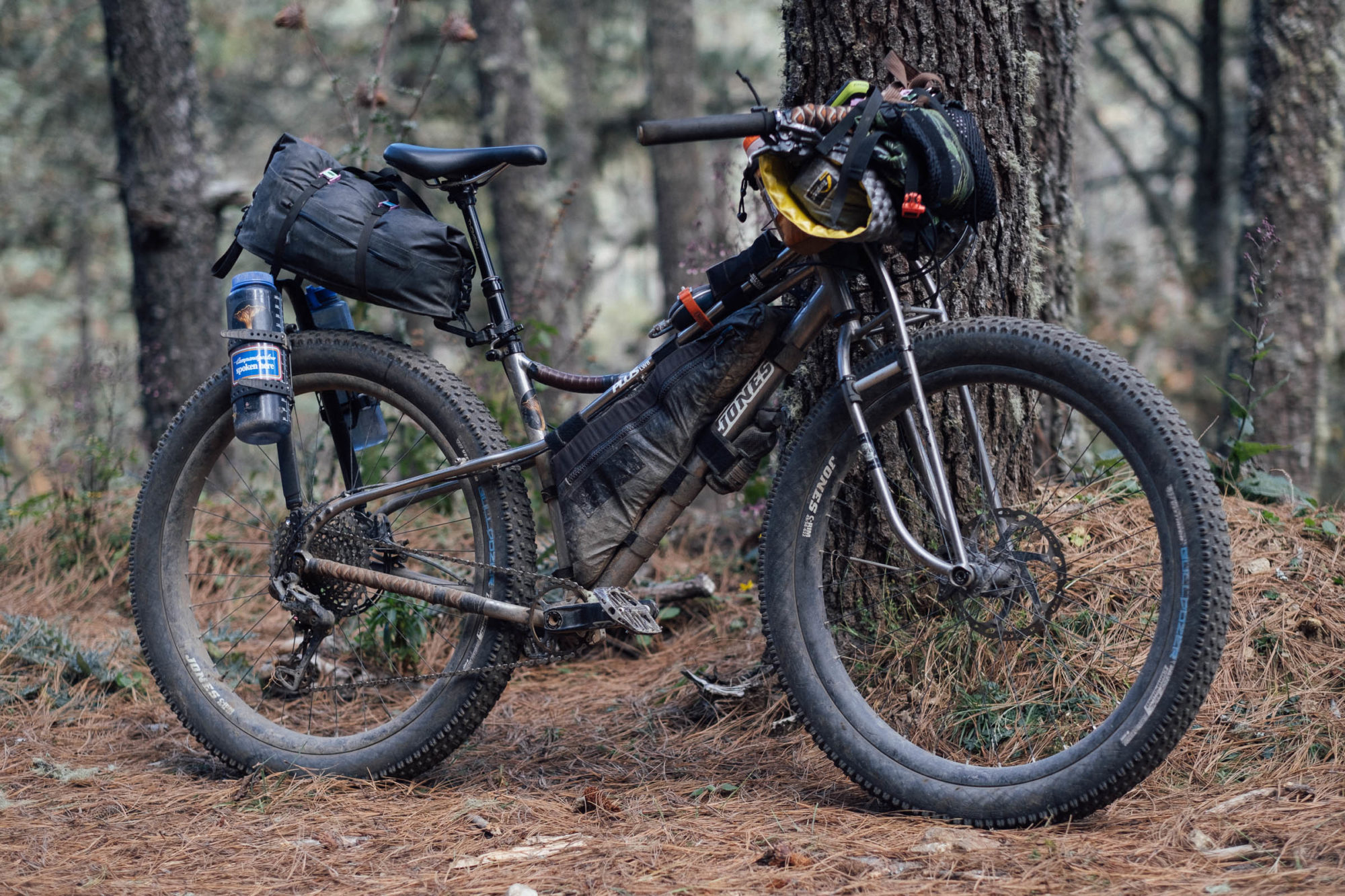
Ours is made by K9 Sportsack and we chose it because it’s the lightest and simplest pack in their range, so it can be rolled up and strapped to my handlebars – or even squeezed inside a framebag – when riding trails. It took Huesos a few outings before he was happy to ride in it but now that he associates it with being outdoors, the pack is simply an accepted part of his life, like a leash or a harness.
Talking of which, we’ve teamed it with a similarly light and minimal harness from Ruffwear and a custom leash that dog-lover Seth at Dos Erres in Mexico City kindly made us. It attaches to my hip belt and I use it for the occasions when Huesos has to be kept close when we’re riding quiet dirt roads. After all, the bigger callejeros still strike fear into his sensitive soul, as do the half-dozen vicious little fluffy white dogs that terrorize him halfway through our local trail loop, sending him into what I call ‘statue mode’ – he gazes at them from a distance but refuses to approach unless on a leash.
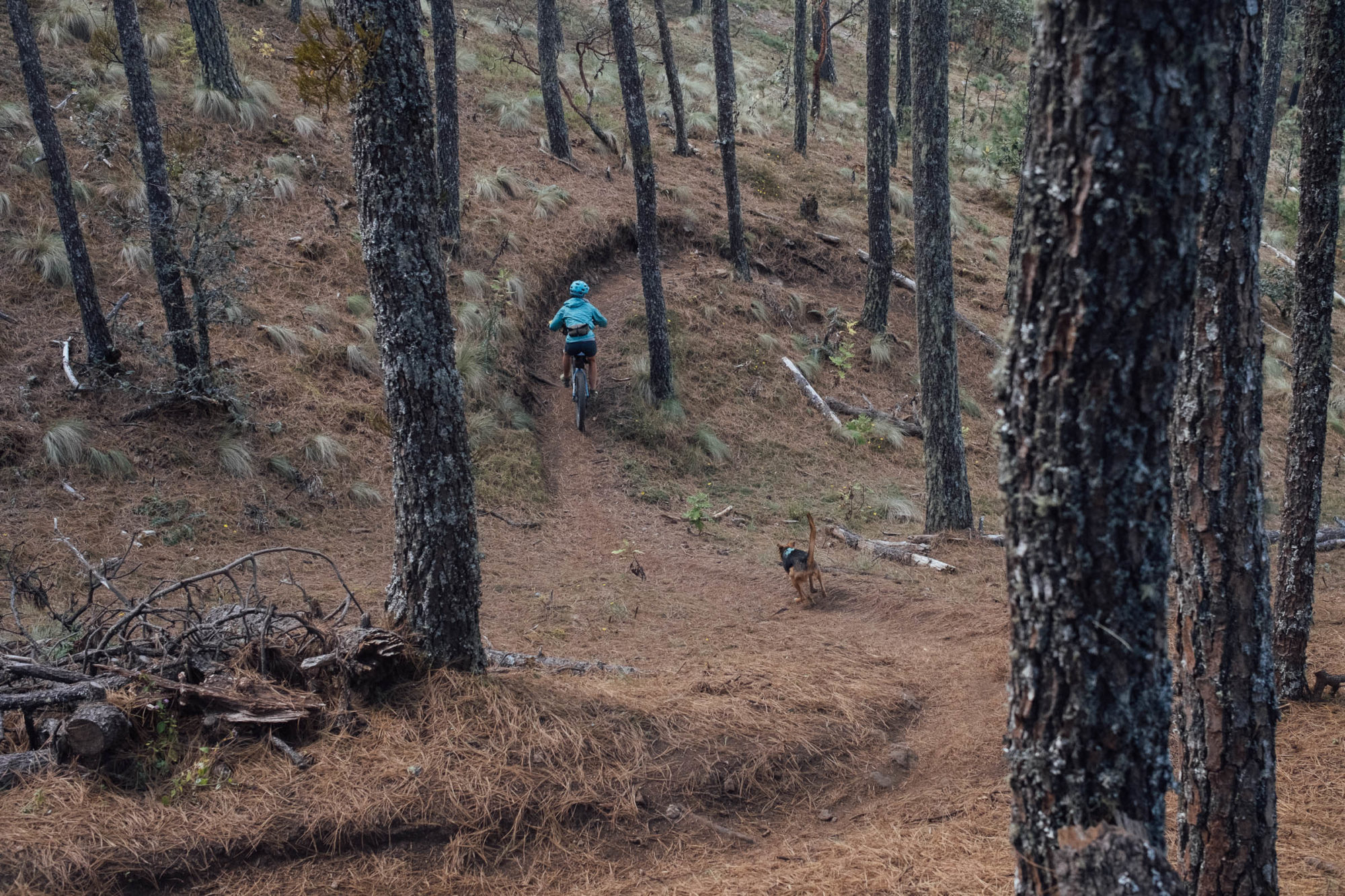
Now, I won’t claim that Huesos is especially thrilled with the process of being loaded into his backpack, at least at the start of the day when he’s brimming with energy and eager to stretch his lanky legs. But after a couple of hours outside, he’s far more amenable to a piggyback ride, tucking in his head beside my own and licking my ears. I suspect he also rather enjoys his commanding view over the world, along with his sense of safety from the marauding street dogs that continue to cause him such angst when we return from our trail rides.
Huesos’ Packlist
- K9 Sportsack Air 2
- 2 x Austere buckes and straps for attaching backpack to handlebars
- Lightweight Ruffwear Flagline harness
- Dos Erres long leash (for attaching to my hip belt when we ride)
- A cut down Therm-a-Rest pad
- High quality dog kibble (weighed out in advance)
- Tasty dog treats
- Gulpy-style water dispenser
- Sea to Summit packable bowl
- Dog fleece (next time, for the mountains)
Our three-day ride into Ixtepeji accrued a larger mileage than we’d normally cover over the same time period and to prepare Huesos for trips like this, we’ve built up his distances slowly over the months, intermingling them with rest days in between. He’s even camped a few times before and has mostly figured out the mysteries of the tent, even if mesh continues to confound him. He’s an independent dog but he does love human attention – everyone in the group doted over him and fed him their leftovers, so his spirits were always high. And whilst we only needed it on occasions, the backpack made all the difference to the success of the trip, giving him the chance to rest when he needed it, whilst the group could continue to ride.
A beginner’s tips for dogpacking
- Pick a route you know, so you can be sure it’s manageable for your dog, depending on its age, breed, and training. Build distances up slowly and be sure not to over-exercise puppies, as their bones are still developing. I adjusted a local ride accordingly, tweaking it to be more Huesos-friendly, in the interests of trimming down its distance and avoiding traffic and some of the more territorial street dogs that roam the campo to get there.
- We kept ‘backpack time’ to a minimum, so I planned a route accordingly. We used it mainly on fast flat sections on forest road descents, or through city traffic.
- Keep an eye on the distances your dog is running too – I make a mental note as I’m riding of how long he’s been out of the backpack or his crate, so I can make sure it doesn’t add up to too much.
- If your route is dominated by mellow terrain, a crate, basket, or trailer will likely work better. But given the nature of the trails here, I knew that any additional weight and impact on handling would make them too challenging for me to ride, so a backpack was our best option.
- The transition times are what slow things down, so consider the terrain ahead. We used the backpack or crate when there’s a descent of more than a couple of kilometres, to avoid him having to run flat out. We let him run on climbs when our progress is much slower.
- Weigh out your food, then bring extra, as your dog will be working hard. We have an old Sea to Summit collapsible bowl.
- Know what water stops there are along the way. We bought a handy water dispenser – similar to this one – that makes rehydration quick and easy.
- We packed an extra sit mat for Huesos to sleep on. In hindsight, a fleece jacket at night would have been good too.
- Pick a harness that is light, comfortable, and doesn’t rub. We settled on Ruffware’s Flagline and it’s been excellent. It has a handle, so Huesos can be easily lifted over big rocks, or quickly restrained if needed.
- Check the legalities of having a dog in your chosen area, when it needs to be on a leash, and be sure to clean up after it.
- Be aware that whilst you may be comfortable with your dog, others may not, so keep your leash handy at all times – I packed it away in a stem bag for quick access.
- Recalibrate how far you intend to ride – dogpacking is more about sharing the experience with your hound, than covering large distances.
- Do you have like-minded friends? More humans are great, but another dog is even better!
More unexpectedly, there’s also the feel-good factor that we’ve experienced from riding with him to the trailhead. I’ve lost count of the number of waves Huesos receives as we weave our way through town, his head peeping out to one side, his paws hanging over my shoulders, a ripple of grins behind us. Even taxi drivers, known here for their dubious driving antics, give us space and a thumbs up. Besides, Huesos has the demeanor, and the disarming face, that people gravitate towards. Perhaps it’s in part down to his tough start to life. Anda feliz! said a passerby to me as I was out walking him one day, reaching down to pet him. “He looks happy.”
It’s going to be hard letting go of such a wonderful, characterful dog with whom we’ve built such a strong connection. I’m not exactly sure what the future holds for Huesos but wherever he ends up, it will be in a good home and he’ll be in a better state than when he entered the world. Above all, I know he’ll bring as much happiness to others as he’s brought to me.
K9 Sportsack Air 2 Review
There’s definitely a technique to loading a dog into the backpack – you can watch the video here to see how it’s done. It revolves around opening the pack fully with its long zip, getting your dog to lie down, sliding their front paws through the armholes, and adjusting the compression straps accordingly. Huesos’ once bony tail is now thick and lustrous, taking a certain sleight of hand to tuck in beside him. At around 13 kilograms (with Huesos inside), lifting the bag up and putting it on your shoulders is a little tricky, at least in a way that doesn’t leave him dangling down and feeling exposed – small hounds are likely a lot easier in this regard. The same goes with taking the backpack off and lowering him back down to the ground, when a second pair of hands can really help. Still, with practice, it’s a relatively fuss-free process – see the image carousel above for a visual explanation.
It took at least a few trips before Huesos became relaxed in the backpack – initially, it’s good to have lots of treats handy – but before too long, he associated getting into it with bikes rides, which he absolutely loves. I expect different dogs will take to it in different ways. One of Huesos’ best friends (Murci, a French Bulldog Pug mix) was comfortable immediately, though it winds her up if she’s not in the very front of a group of cyclists.
All things told, we found the backpack to be a complete gamechanger for getting us to the trailhead without a car. It’s well ventilated, there are side pouches for snacks or water bottles, and there’s even a little carabiner located inside the collar for added security. The back panel isn’t padded but the base of the bag is, providing comfort and support for your dog – and you can add foam blocks if need be. Above all, it’s light and packs down relatively small when not in use.
We try and keep distances in the pack short, for both his comfort and mine – although the shoulder straps are comfortable, it’s ultimately a very minimal design. Health-wise, Canine Sportsack recommends a maximum of 30-45 minutes in the pack, though we generally aim for less – after all, it’s mostly just to get to the trails, which are a few kilometres away. The Air 2 is definitely on the minimal, lightweight side and this particular model isn’t suited to dogs beyond Huesos’ size (14 kilograms max). Any bigger and I expect a trailer or mid-tail cargo bike is a better option – see the bottom of this post for our dogpacking guides.
Build quality is really good and the backpack is holding up well. I’d have liked to have seen a burlier zip with a stronger pull – our toggle broke shortly after we got it – and a detachable hip belt for hiking might have been nice, at least for the largest size.
The K9 Sportsack website includes a chart with all the relevant sizing information (including weight, length, and chest size), so you can choose the right pack and accessories for your particular dog. It’s approved by veterinarians, and from what I can see, Huesos shows no discomfort when he’s in it. The only time he squirms to jump out is when we bump into someone he already knows, whether canine or human!
- Model/size Tested: Air 2 (large)
- Actual Weight: 540g
- Place of Manufacture: China
- Price: $75
- Manufacturer’s Details:K9 Sportsack
Stay tuned for our alternate dogpacking setup, using a titanium Jones SWB that I now affectionately call the Huesos Milk Crate Bike. Talk about living his best life!
Apparently, there are some 18 million dogs in Mexico, 70 percent of whom are strays. If you’d like to rehome a dog from Oaxaca, get in touch with Friends of Megan or @caravanacanina.
Related Content
Make sure to dig into these related articles for more info...
Please keep the conversation civil, constructive, and inclusive, or your comment will be removed.













